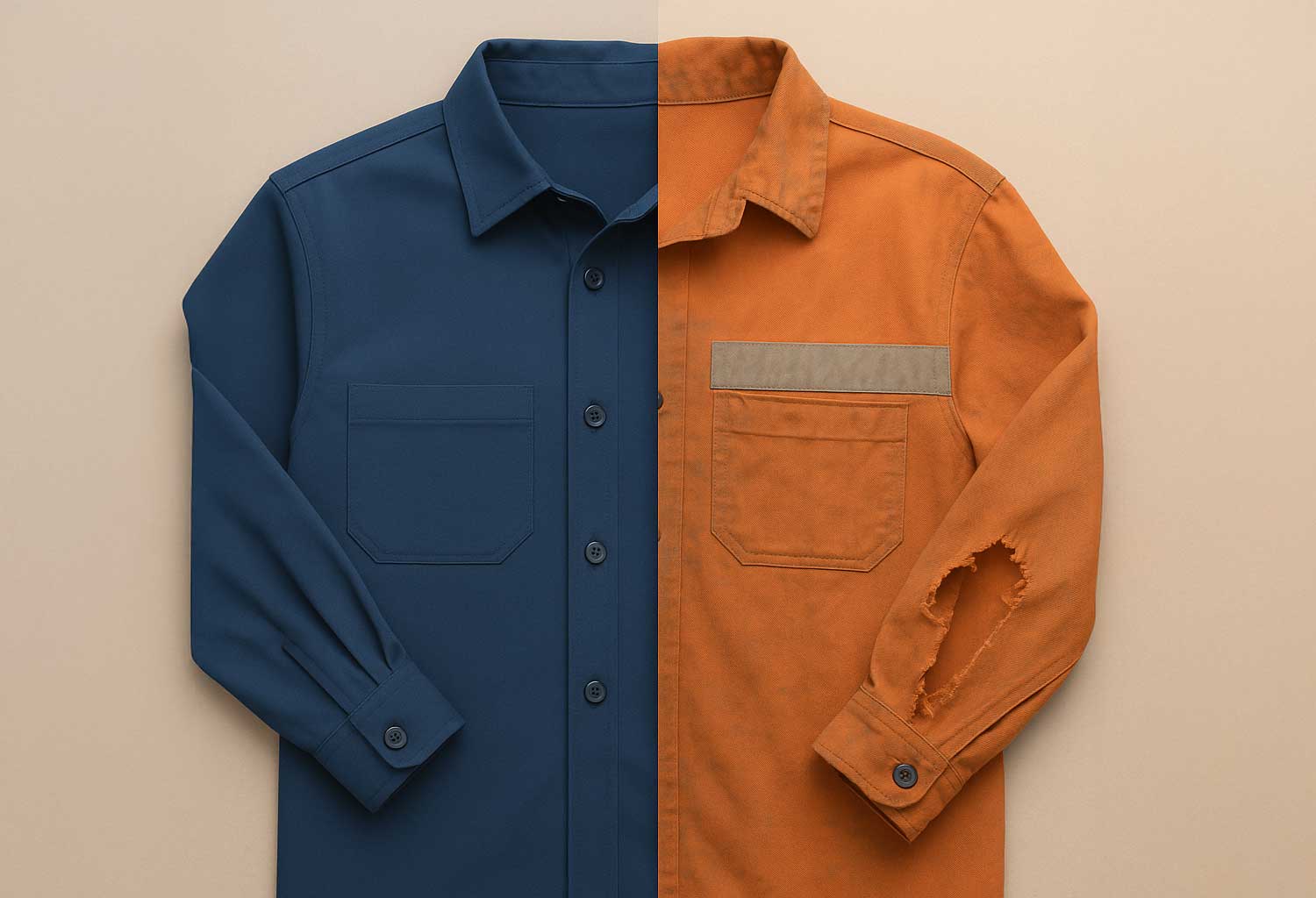If you have spent any time in the uniform or the workwear world and have worked on larger programs, you may have experienced the debate of a low-cost uniform program. There have been times in my career that my team presented a well-built program with tested fabrics, reinforced construction, and trims that can survive the rigors of the job… then someone slides a competing quote across the table and says, “But this supplier is a few dollars less.” In an instant, the conversation shifts from performance to price.
And while the unit cost might look attractive on paper, the long-term reality tells a vastly different story. There is an illusion of savings that can seem attractive until the program rolls out.
A client can select a “cost-efficient” woven shirt for their large workforce. It looked perfectly fine on Day 1. But within a few months, HR was emailing photos: collars collapsing, sleeves twisting, buttons distorting from dryer heat, and colors already drifting from the original shade.
What felt like a win in a budget meeting quickly converted into replacement orders, employee complaints, and inconsistent appearance across the team. The unit cost had been low, but the lifecycle cost tripled.
This is the pattern with many budget-driven uniform choices: you are not saving money; you are deferring a bigger bill.
Below are examples of what drives a low-cost uniform.
Fabric longevity: Lower-tier fabrics often rely on loosely woven blends or lower-density polycotton. They pill sooner, fade faster, and lose their shape long before the intended wear cycle. In hospitality, transit, or industrial environments, decline becomes visible almost immediately.
Trim durability: Buttons, zippers, snaps, and thread are unsung heroes of a uniform program. When trims are not engineered for laundering, they crack, warp, melt, or unravel. A single broken zipper can take a garment out of rotation entirely.
Construction shortcuts: Last week I wrote about the importance of structural design that can anticipate stress points and add reinforcement. This does come at a cost. But many low-cost programs reduce reinforcement at stress points, use fewer bar-tacks, and lower the stitch count.
You start to see pocket blowouts, seam failures, and distorted edges long before the garment should be nearing end of life.
There are hidden costs when a client goes with the lowest cost.
- Increased replacement frequency
A well-engineered uniform can last a year or more. Lower-tier garments may last half that time, meaning you reorder twice as often. Multiply that across a full workforce and the “savings” evaporate.
- Employee morale and brand pride
When uniforms fade quickly, lose shape, or feel uncomfortable after a few washes, employees sense it. The garment becomes something they tolerate rather than something they are proud to put on. That directly affects service, confidence, and team cohesion.
- Brand inconsistency
Nothing undermines a polished image faster than mismatched color shades, limp collars, or distorted silhouettes. Uniforms are one of the most visible daily brand touchpoints. A compromised garment compromises the message.
Cost vs. Value: The Real Conversation
When someone asks why a higher-quality garment costs more upfront, I always respond: it is not more expensive, it is a purpose-built garment. Those extra dollars reflect stronger patterns, higher-density fabrics, reinforced seams, durable trims, and quality control that ensures each piece performs across dozens of launderings.
Value in the uniform industry is not measured by the number on the invoice; it is measured by how long the garment supports the worker, maintains brand standards, and reduces operational disruption.
Uniforms are not consumable. They are part of how a brand shows up in the world, part of worker safety and comfort, and part of daily professionalism. Choosing a lower-cost option is not inherently wrong but understanding the trade-offs is essential. When organizations invest in performance and longevity, they invest in their people, their brand, and their operations.




















